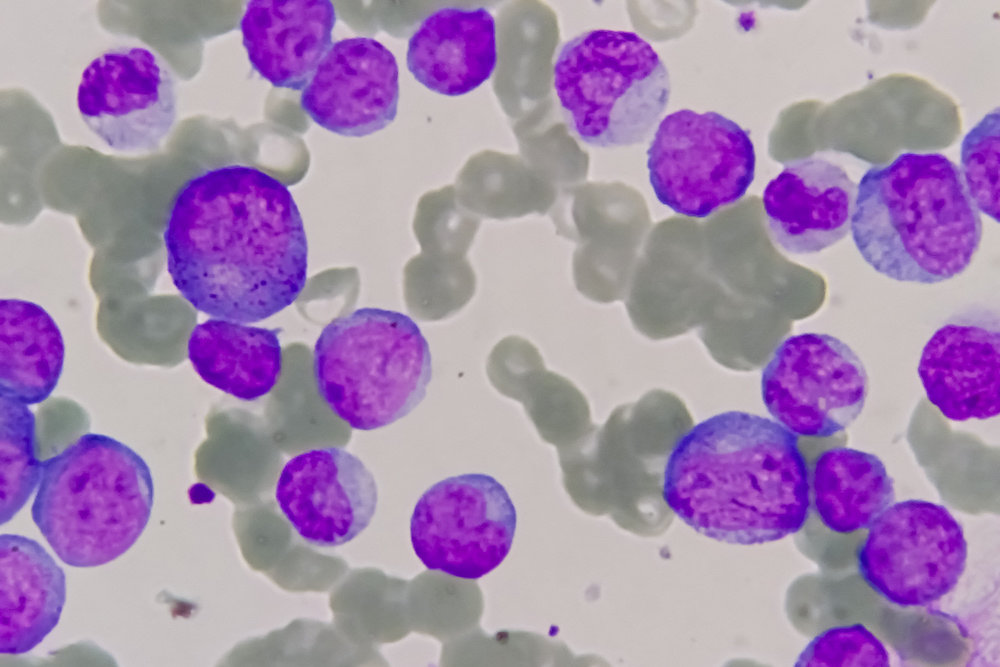How Acute Myeloid Leukemia (AML) is Different from Other Blood Cancers
6 min read

Blood cancer is a broad category that includes several different types of cancer that start in the bone marrow. As the cancer cells grow, the body can’t make enough healthy blood cells. This can happen quickly, in a matter of a few weeks, or slowly over a few years.
Leukemia starts in the bone marrow, causing the production of too many abnormal white blood cells. There are several types of leukemia based on how quickly the cancer cells reproduce and the type of cell where they originated. Acute leukemia means the cells multiply quickly compared to chronic leukemia, which means the cells are slow-growing.
Leukemias also start in one of two different types of cells: lymphocytic leukemias start in lymphoid cells, and myelogenous leukemias start in myeloid cells. Myeloid cells are found in the bone marrow and mature into white blood cells, red blood cells, or platelets.
How is Leukemia Different From Other Blood Cancers?
Blood cancers typically start in the bone marrow, where your body develops stem cells, which then develop into various types of blood cells. Most often, blood cancers affect the white blood cells. The three broad categories of blood cancers are:
- Leukemia - produces a high amount of abnormal white blood cells that block the bone marrow from producing red blood cells and platelets. Based on the type of cell where the leukemia starts and the speed of cell growth, there are four primary types of leukemia:
- acute lymphocytic leukemia
- acute myeloid leukemia
- chronic lymphocytic leukemia
- chronic myeloid leukemia
- Lymphoma - occurs in the lymphocytes, the white blood cells responsible for fighting infection and sickness. Lymphoma cancers typically spread throughout the body in the lymphatic system. This means the cancer cells can collect in the lymph nodes. There are two broad categories of lymphoma: Hodgkin lymphoma and non-Hodgkin lymphoma, with over 60 sub-types.
- Myeloma - often called multiple myeloma, this type of blood cancer affects the plasma in the blood. Plasma is a type of white blood cell that produces antibodies. A lowered amount of plasma makes you more susceptible to infections.
What is Acute Myeloid Leukemia (AML)
Acute myeloid leukemia is the most common type, accounting for 80% of adult leukemias. Immature white blood cells, called blasts, become cancerous and overtake the bone marrow. This results in cancerous cells quickly entering the bloodstream and spreading throughout the body to the lymph nodes, central nervous system, spleen, liver, and reproductive organs.
AML goes by many names, including acute myelocytic leukemia, acute granulocytic leukemia, acute non-lymphocytic leukemia, and acute myelogenous leukemia.
Risk Factors for Developing Acute Myeloid Leukemia
Several different factors can increase your risk of developing acute myeloid leukemia. Some of these are genetic factors, and some are environmental factors within your control, such as smoking. Here are some of the most common factors associated with AML.
- Gender - males are at higher risk
- Age - as individuals age, their risk of AML increases. The median age at diagnosis is 68.
- Smoking
- Exposure to benzene
- Exposure to some chemotherapy drugs
- Radiation exposure
- Close family relative with AML
- Specific genetic syndromes (Fanconi anemia, Bloom syndrome, ataxia-telangiectasia, diamond-blackfan anemia, and others)
How Acute Myeloid Leukemia Differs from Other Blood Cancers
As previously mentioned, acute myeloid leukemia is different from other common blood cancers because it forms in the marrow of the bones. This results from an acquired genetic mutation that causes the bone marrow to grow abnormally. The abnormal cells are called leukemic blasts. They live longer than healthy cells and block the production of healthy cells needed in the blood.
Acute myeloid leukemia is considered one of the most aggressive forms of leukemia, so finding it early makes treatment easier.
Acute Myeloid Leukemia Symptoms
AML can impact the body in various ways, which means there are quite a few different types of symptoms. Not every patient experiences all of these symptoms. Those with an AML diagnosis can experience very different symptoms from each other.
Low red or white blood cell counts
Your red blood cells carry oxygen to cells in the rest of your body, while the white blood cells fight infection. When AML impacts the production of these cells or their ability to carry out their jobs, individuals experience issues associated with each. When red blood cell counts are low, patients can experience fatigue, pale skin, shortness of breath, lightheadedness, or feeling chilled.
Low white blood cell counts can result in getting sick more frequently or infections that won’t go away. These issues are frequently accompanied by fever.
Low platelet counts
Platelets are responsible for helping individuals clot when they are injured or bleeding. When your platelet counts are low from leukemia, people may experience difficulty with clotting from a wound, increased bruising, or increased bleeding during a menstrual cycle.
High leukemia cell counts
In contrast with low blood cell counts, high leukemia counts can also cause issues in the body. Leukemia cells are larger than white or red blood cells, and when there are too many of these cells in the body, they block access to blood vessels. This can result in a variety of issues, including:
- Weakness
- Slurred speech
- Confusion
- Sleepiness
- Headache
- Bone or joint pain
- Clotting problems
- Abdominal swelling
Any of these issues could be a sign of leukemia, and you should visit your doctor if you notice any. Your doctor will run blood tests to see if there are signs of leukemia or another blood cancer. If a blood condition is suspected, you will need to visit with a blood cancer specialist called a hematologic oncologist.
Treatment Approaches for Acute Myeloid Leukemia
Treatment for AML typically uses three phases: induction, consolidation, and maintenance.
Induction
This approach is used as the first line of defense to simply reduce the amount of cancerous cells throughout the body and bloodstream. It is typically an in-patient chemotherapy process. If the bone marrow still shows signs of leukemia cells after chemo, another round may be done, or a bone marrow transplant may be recommended.
Bone marrow transplants are used to reestablish healthy bone marrow tissue so the body can produce healthy white blood cells. Bone marrow transplants are conducted after successful induction therapy to help drastically reduce the amount of cancer in the body.
Consolidation
The second treatment phase is called consolidation and starts after successful remission through induction treatments. These are chemotherapy treatments intended to kill any remaining leukemia cells and to help prevent the cancer from recurring.
Maintenance
For patients who have a higher likelihood of leukemia recurring or who could not go into complete remission in the induction phase, maintenance treatment uses low doses of regular chemotherapy to ensure that cancerous cells are eliminated when they first appear.
New Targeted Therapy Treatments for AML
Targeted therapy drugs hone in on specific genes or proteins causing cancer cells to grow. AML patients are tested to see if any of the following are present:
- FLT3 gene mutation
- IDH1 or IDH2 gene mutation
- BCL-2 protein overgrowth
- hedgehog pathway
If one or more of these tests are positive, a targeted therapy drug may be given to counteract the gene or protein that fuels the cancer cells. These are generally easier to tolerate compared to chemotherapy and, in some cases, are an alternative for AML patients over 75 who may not be able to take the intense chemotherapy treatments.
Cancer research, including the clinical research program at Rocky Mountain Cancer Centers, is continuing to look for new ways to treat AML.
Related blog: How Bone Marrow Transplants are Used to Treat Blood Cancers
Evaluating Your Treatment Options
If you have recently been diagnosed with acute myeloid leukemia, Rocky Mountain Cancer Centers has the expertise to help you explore all of your treatment options. Our hematologic oncologists will explain your diagnosis and treatment options based on your preferences and overall health.
RMCC is located in Denver, Boulder, Colorado Springs, and throughout the Front Range. Request an appointment at a location that is convenient for you to learn more about your treatment options and next steps.
